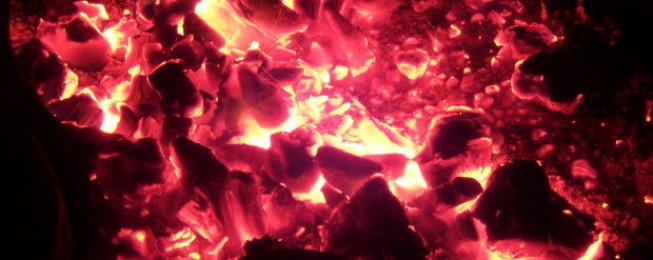Heat Policy: Cinderella or Wicked Step-Mother
Richard Lowes, IGov Advisory Group – 2nd May 2013
We are hugely import dependent to secure enough of it, its costs are rising and it’s relatively high carbon, yet gas is central to how we provide heat to our homes and businesses in the UK. But, this is all to change, we are told, by the Government’s grand ‘heat strategy policy statement’. At some point in the 2040s, my London flat will be connected to a district heating network which will serve all houses and businesses in London. My friends in more rural areas will have their heating and hot water provided by some sort of electric heat pump system. Well doesn’t that just sound perfect!
DECC have travelled a huge distance to get to this point and good on them, the heat strategy has been a huge and complicated project to pull together. Back in 2007 when the DTI released their Energy White Paper, heat barely got a mention apart from a brief reference to energy efficiency. The groundswell has grown to a point now where we have a whole directorate in Government dedicated to heat and industry, as well as a ‘Renewable Heat Incentive’ feed in tariff style mechanism which offers a very tasty return for developers.
This has all come about for a number of reasons. Climate change targets, renewable energy targets and prices have all helped raise heat up the agenda, but perhaps the biggest thing to help heat’s profile was the lack of attention it was getting from Government and subsequent lobbying by industry. Heat accounts for 47% of our carbon emissions and 60% of our bills. It became too big for the Government to ignore and the focus on electricity was clearly not going to solve all of our energy problems.
DECC’s heat strategy makes very interesting reading. The backbone of the strategy is based on cost optimising, carbon limiting models. These include the MARKAL model which has been developed over many years and used very widely and the ESME model which has been developed by the Energy Technologies Institute (ETI). Although these models represent a good start they do have some limiting factors which question how much they should be relied on.
Firstly the models are based on assumptions on price. These assumptions will inevitably prove to be wrong, no one can accurately forecast energy or technology prices. Secondly, these models miss things. For example, people and behaviour are not included and nor can they be unless a price is put on these behaviours, by for example increasing the rate of return for incentives or increasing required hurdle rates for investment. Even when this is done, it is still not possible to represent society, it’s too complicated.
So do we need to take another modelling approach? Bottom up models look at the world differently but again are not perfect, they often rely on even more assumptions and endpoints can’t be specified, the model has to be manipulated until these are delivered. Again, assumptions on prices and behaviours still need to be made. So should we give up on these modelling exercises? Probably not. Although they are limited, they seem to be the best thing we have. We know the rough direction and from this, Government can develop a heat strategy and then can start making policy decisions.
So we now know that the strategy foresees that in urban areas there will be massive amounts of district heating and in more suburban and rural areas there will be a focus on heat pumps. The more recently updated model suggested that we will also need some gas to help us meet spikes in heat demand which occur in winter. All relatively sensible it seems and that’s all fine but it’s nothing really new. People have been talking about the benefits of district heating and heat pumps for many years.
So we move on to delivery and currently this is something that the Government is not very good at. Although the strategy is relatively recent, we have known about the potential benefits of renewable heat for a long time. But the RHI, the key policy to deliver renewable heat has not got off the ground after years of delays (the domestic scheme hasn’t even started) and the Green ‘Deal’, the main policy to deliver energy efficiency is trying to solve a problem that doesn’t really exist i.e. people and behaviour are the barrier to energy efficiency, not necessarily upfront costs.
So we are a long way from where the Government’s heat strategy wants us to get to….. we’re not even going in the right direction. More homes connect to the gas network, internal temperatures continue to rise and we import more and more gas.
But stop and think about the reality of heat.
What about the busy family who have insulated their house and use an 85% efficient gas boiler? On the current system for an existing house, that’s about as low-carbon and efficient as it goes. How can such consumers be made to switch? What will beat that for comfort, ease and cost?
We now know that with all the supplies of gas we have that it could remain the cheapest option to provide heat for decades and will very likely also remain the fuel of choice. Why would an average family, landlord or working professional switch from the cheapest and easiest option to a more expensive or complicated heat network. This challenge shouldn’t be underestimated. What would the Daily Mail say about a Government which demanded people replace their own boilers with centrally run heat network schemes most likely at a higher cost?
And as for a solution to this problem……. I’d love to hear your thoughts.
Twitter: SGN_Policy
Related Posts
« Previous Inclusive Growth, Innovation and Technology: Interdisciplinary Perspectives New Thinking Blog: British energy policy: descending to a combination of pork barrel politics and desperation? Next »







